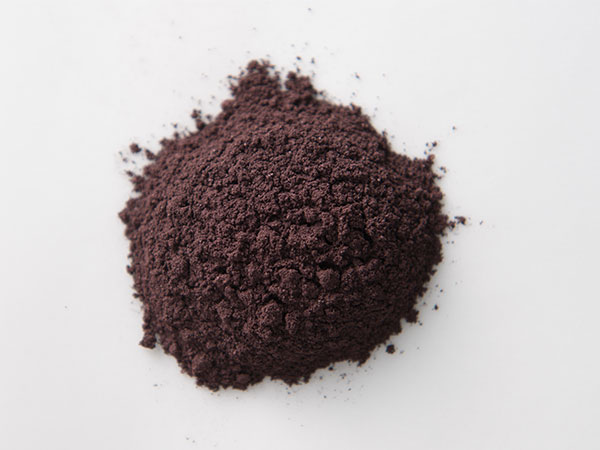Palladium hydroxide on carbon (Pd(OH)₂/C catalyst)
Palladium Hydroxide on Activated Carbon (Pd(OH)₂/C) is a highly efficient heterogeneous catalyst widely used in hydrogenation reactions, Suzuki couplings, Heck reactions, and fine chemical synthesis. Our premium Pd(OH)₂/C catalyst is supported on high-surface-area activated charcoal (5%–20% Pd loading), ensuring exceptional catalytic activity, selectivity, and recyclability. Ideal for pharmaceutical intermediates, nitro reductions, and cross-coupling reactions, this palladium-on-carbon catalyst is available for R&D and industrial-scale applications. Buy Pd(OH)₂/C from trusted suppliers or request technical specifications today.
Princeton Powder is a leading supplier of supported palladium hydroxide catalyst. Buy Pd(OH)₂/C from trusted suppliers or request technical specifications today.
| Material | Palladium hydroxide on carbon, Pd(OH)₂/C catalyst |
| Carrier/Support | Powdered activated carbon |
| Carrier material | Coconut shell, coal, wood, peat and so on |
| Appearance | Black powder |
| Pd content | 5%, 10%, 15%, 20% |
| CAS Number | 12135-22-7 |

Description of Palladium Hydroxide on Activated Charcoal
Our Palladium Hydroxide on Activated Charcoal (Pd(OH)₂/C) is a highly effective catalyst widely used in hydrogenation and organic synthesis. Supported on high-surface-area activated carbon, this palladium hydroxide catalyst offers outstanding selectivity and activity, particularly in selective hydrogenation of carbonyl compounds, alkenes, nitro groups, and dehalogenation reactions. It is a preferred choice in the pharmaceutical, fine chemical, and specialty material industries.
Pd Content: Standard 20% palladium hydroxide on carbon loading; customizable according to specific requirements.
Particle Size: Fine powder, typically 20–50 microns, ensuring excellent dispersion and reactivity in reaction media.
Support Type: Activated carbon with optimized pore structure, enabling superior distribution of Pd(OH)₂ for maximum catalytic performance.
Moisture Level: Controlled moisture content (≤50%) to enhance catalyst stability, facilitate safe handling, and prolong shelf life.
Technical Parameters Pearlman’s catalyst - Pd(OH)₂/C catalyst
CAS No.: 12135-22-7
Specifications: Pd 110, Pd115, Pd120
Content of palladium hydroxide: 10%, 15%, 20%
Carrier material: coconut shell, coal, wood, peat and so on
Carrier state: powdered activated carbon
Specific surface area (m2/g): ≥930
Metal surface area (m2/g): 85 ~ 105
Average particle size of carrier (μm): 15, 20, 30, 50, 80, 100
Impurities (m%): Cu, Fe, Cr, Ni, Ag, Mg and other impurities ≤ 0.3
Particle strength (m%): ≥ 90
Moisture content: 0.1% ~ 65%
Ash content (m%): ≤ 5
Application of Palladium Hydroxide on Activated Charcoal
The palladium hydroxide catalyst is characterized by high hydrogenation and reduction efficiency, excellent selectivity, and stable performance. It requires a low catalyst-to-substrate ratio during use, offers good reusability, and can be easily recovered. This catalyst is widely applied in hydrogenation, selective hydrogenation, dehydrogenation, oxidation, hydrogenolysis, dehalogenation, carbonylation, decarbonylation, telomerization, olefin isomerization, and hydrogenation purification processes.
Palladium hydroxide on activated carbon Scholar Articles
Supported palladium hydroxide-catalyzed intramolecular double C H bond functionalization for synthesis of carbazoles and dibenzofurans
H bond functionalization for synthesis of carbazoles and dibenzofurans
Abstract: Metal oxide-supported palladium hydroxide (Pd(OH)2/MOx) catalysts enabled the oxidative intramolecular couplings of diarylamines to carbazoles and diarylethers to dibenzofurans via double aryl Csingle bondH bond functionalizations with molecular oxygen as the sole oxidant. While supported PdO, Pd, and palladium acetate catalysts showed poor catalytic activities, supported Pd(OH)2 exhibited remarkably high catalytic activity. Among supported Pd(OH)2 catalysts, Pd(OH)2/ZrO2 was found to be an efficient catalyst in terms of catalytic activities and selectivities for the synthesis of carbazoles and dibenzofurans.
